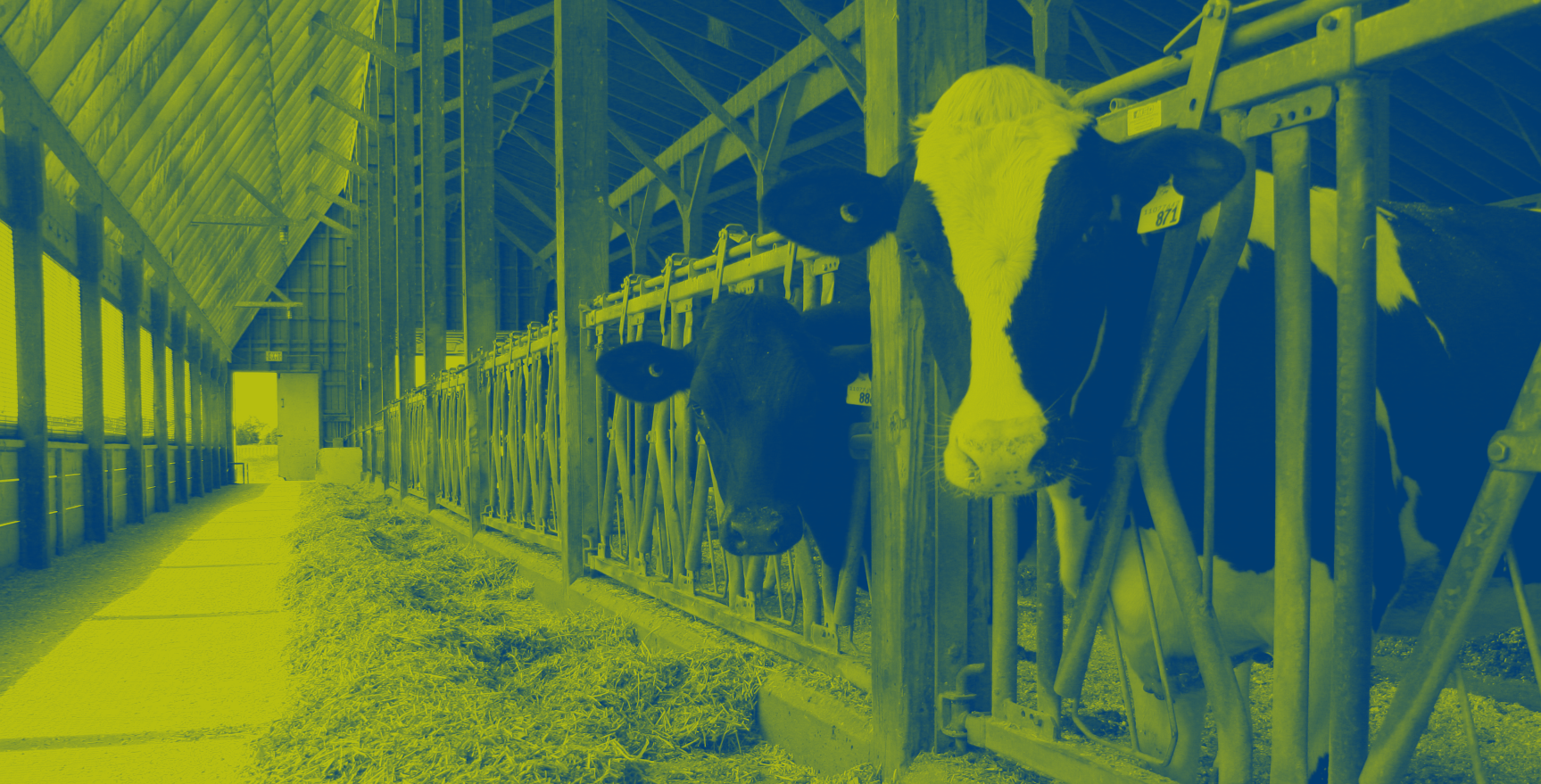Heat stress impacts lactating cows, transition cows and their offspring
In the last decade, we have continued to learn even more about the impact of heat stress and how it can directly affect your herd.

When considering strategies to combat heat stress, one must consider the physiological strategies the cow utilizes on her own to reduce her internal temperature:
- Dissipation of body heat (seen Graphic 1, illustrated in blue)
- Increase in water intake
- Heat dissipation from the surface of the skin through increased peripheral circulation, vasodilation, sweating, and increasing panting
- Loss of moisture (studies have shown more than 50L/day)
- Loss of potassium, an important osmo-regulator
- Exhaling more carbon dioxide which disrupts the acid/base balance
- Drooling more, increasing the loss of bicarbonate which will decrease rumen pH, “mimicking” acidosis
- Reduce heat producing activities (see Graphic 2, illustrated in red)
- Vasoconstriction in digestive tract, reproductive tract and mammary gland
- Lower appetite
- Slower rate of passage of digesta
- Less ruminal contractions
- Decrease in nutrient absorption
- Decrease in performance (growth, milk production, reproduction etc.)
Graphic 1.
Graphic 2.
Through his research, Dr. Lance Baumgard at Iowa State University has found an increase in glucose utilization and breakdown of protein stores in heat-stressed animals. The dry matter intake decrease in heat-stressed cows could only explain 50% of the change in milk production performance. They discovered that the cows also lost more body weight in the form of muscle rather than body fat. Therefore, during the pair fed study, even though they consumed the same amount of feed, heat-stressed animals produced less milk and lost more weight. In addition, they found evidence following heat stress of a rapid increase in endotoxins. ‘Leaky gut’ is a term used to describe increased intestinal permeability resulting in unwanted molecules (e.g. endotoxins, bacteria) to ‘leak’ from the gut into the blood stream stimulating an immune response. This may explain the additional loss in production performance as the additional nutrients are directed towards the immune system.
Heat stress is not just occurring in the milking herd. One of the most susceptible animals on the farm to immune challenges is arguably the transition cow. Dr. Geoffry Dahl, from the University of Florida, has been exploring heat stress during the dry period for not only that individual cow, but also a long line of her offspring.
The research demonstrates that a dam dealing with heat stress during the dry period will experience a decrease in immunoglobulins in the colostrum, decreased lymphocyte proliferation, decreased blood flow to placenta and mammary gland and a decrease in mammary growth (see Table 1.). Those experiences led to approximately 5 kg/day less milk on average compared to animals who did not experience heat stress during the dry period. Additionally, her calf will suffer from lower birth weight, which appears to carry on to weaning weight, lower IgG absorption (in addition to a dam providing lower levels in the colostrum). Later in life, a reduced reproductive efficiency and lower survivability rate was also identified (see Table 1.).
Heat stress during the dry period was associated with decreased placental weight. This led to lower circulating placental hormones. A decrease in total uterine and umbilical blood flow and compromised placental vascularization were observed in heat stressed dry cows. As a consequence of reduced placental development, fetal development is compromised, and calf birth weights are lower.
Table 1.

(+ Data taken from Tao et al., 2013)
But it does not stop with the calf! The daughter of the calf will also suffer from an altered ability to thermoregulate and a decrease on average of 3.8 kg of milk/day for up to 3 lactations. The calf’s granddaughter will still be experiencing negative milk performance on average reduced by 1.3 kg of milk per day.
Talk with your Dairy Nutrition Advisor, sales representative or local Shur-Gain dealer about strategies to combat heat stress in not only your milk herd!
References available upon request.

Unsure how to best manage your barn and herd during hot summer days?
Download our dairy heat stress checklist to ensure you have the right systems in place to support your herd.